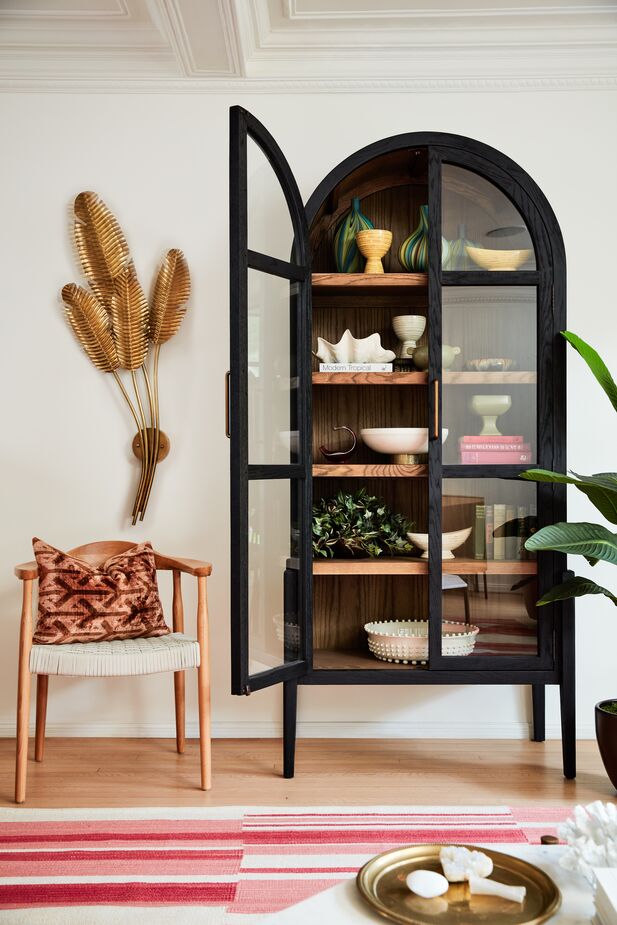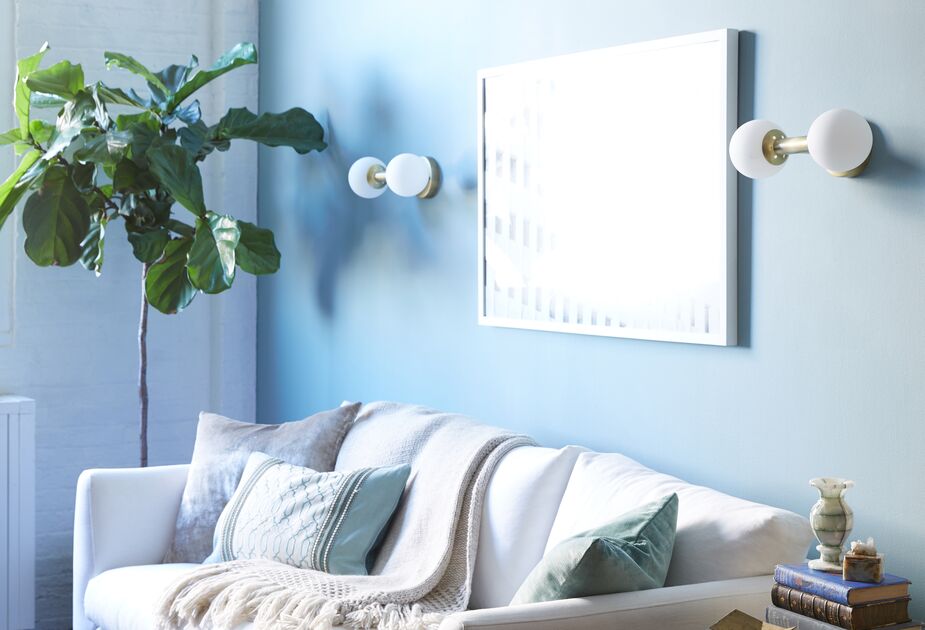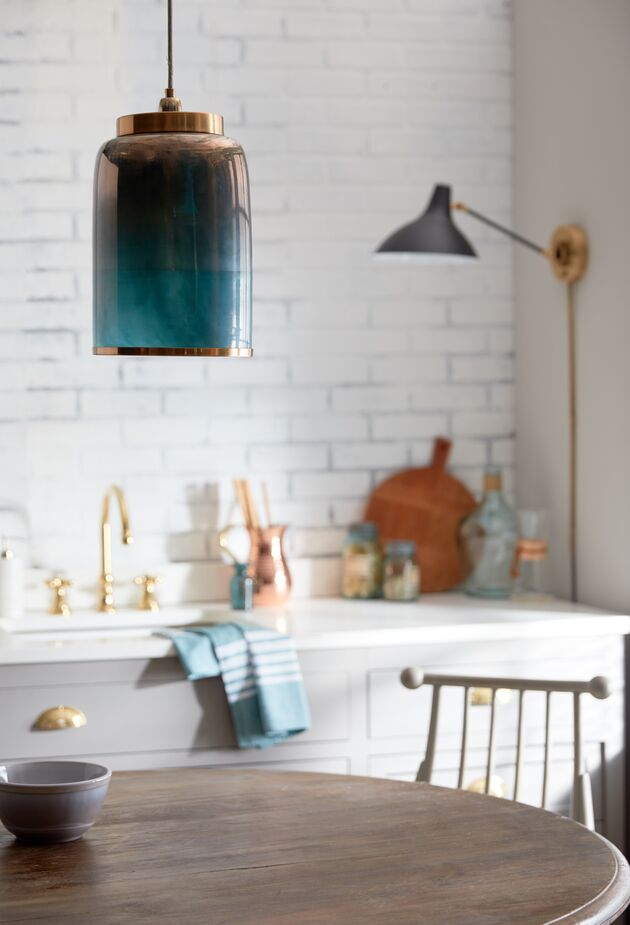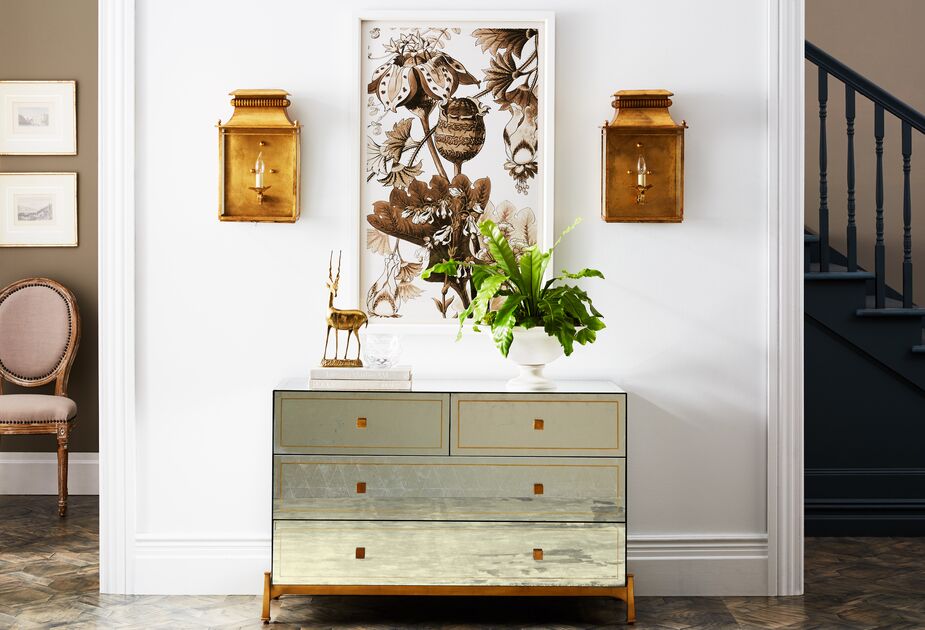Pity the poor sconce: Despite its impressive versatility, people tend to overlook, if not outright forget, wall lighting fixtures when decorating.
We’re going to rectify that. The tips and photos below will show you how sconces can make a room not just brighter but also chicer and more functional. And if you need additional help, book a free appointment with One Kings Lane Interior Design.
• Hardwired refers to lighting and appliances that are connected directly to a room’s electrical framework. There are no visible cords from the fixture to the outlet. However, you have much less flexibility regarding placement, unless you hire an electrician to rewire the framework. What’s more, only electricians should install sconces (or any other hardwired fixtures). Many sconces, however, are now available as fixtures you can plug into an outlet as you would a table lamp.
• In a bedroom, sconces can substitute for bedside lamps, freeing up space atop nightstands. Remember to position the on-off switch so that you can easily reach it from the comfort of your bed.
• Likewise, if you use a console or other slender surface as a desk, consider replacing a lamp with a sconce, especially one with an extendable arm or an adjustable shade.
• If you’re using multiple sconces to light a hallway, the rule of thumb is to space them about six feet apart.
• In a bathroom, having a sconce on either side of the mirror will provide even light without creating distracting shadows on your reflection. Optimal height for the center of the sconce is roughly eye level.
• If you’re placing a sconce above your bathroom mirror rather than beside it, consider one with at least two bulbs so that, again, your reflection is evenly lit.
• When placing sconces near moisture, be sure they’re damp-rated.
• When a sconce’s light is directed up, it provides ambient light. If you’re using the sconce as task lighting, choose one that directs light downward.

Sconces are fashionable as well as functional. The Tropical Sconce here serves as a wall sculpture in addition to transforming this space into a reading nook. Also shown: the Talia Arched Cabinet in Drifted Black, the Reid Rope Armchair in Natural/White, and the Arlin Flat-Weave Rug in Pink/Ivory. Photo by Joe Schmelzer.


Sconces are true multitaskers here. They illuminate a windowless corner, visually counterbalance the windows, and help set the dining nook apart from the rest of the room. Design by Chandos Epley Dodson. Photo courtesy of Chandos Interiors.

Dimmer switches are one way to vary the brightness of a room. Another is to place multiple sconces in a room. Here, you could turn on all three for maximum brightness and use just one or two otherwise. Swing-arm sconces such as those above offer even more versatility. Shown above: the Brooke 3-Seat Sofa in Light Blue Crypton Velvet, the rug Peyser Jute Rug, Coffee Fields by Laura Roebuck (left) and Cloudland, also by Laura Roebuck, above the sofa. Photo by Frank Frances.

In a bathroom, sconces (like the Etoile Sconces here) flanking a mirror provide even, flattering light. Find the étagère here.

While the Vapor Pendant beautifully illuminates the kitchen table, the Charlton Sconce ensures that there’s ample light at the counter for reading recipes.

If your room isn’t hardwired for sconces, don’t fret: A number of styles, like the Simon Sconce shown here, can simply be plugged in to an outlet. Find the console table here. Photo by Frank Frances.

Why take up precious nightstand space with a lamp when you can opt for a sconce instead? For optimal versatility, consider a swing-arm sconce, such as the appropriately named Classic Swing-Arm Sconce above. Find the chaise here.

Join the Discussion